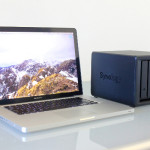Local Storage Options For Your Security System
There are plenty of aspects to consider when it comes to investing and installing a new security camera system. The goal is to deter any theft or crimes while capturing the necessary footage should an incident occur. With that said, aside from the security cameras you choose, your surveillance storage solution should be of high quality and capacity and tailored to your storage needs.
Storing your video footage locally makes it easier to access, and is usually easier to use. In addition, local storage options are much more cost-effective than other storage solutions. In terms of local storage, there are two main options: internal or external. Internal storage is saved within the camera whereas external storage is saved to a hard drive, usually located within a computer or CCTV DVR/NVR. Each option poses their respective advantages and disadvantages.
Internal Camera Storage
When you store your video footage internally, it is usually via a microSD chip within the camera. This option is ideal for those who don’t want to rely on internet access or wiring, as this can slow down your internet. In addition, since internal storage bypasses any transferring to external storage, video footage is nearly immediately available.
The biggest downside of internal storage is its limited storage capacity. In an effort to combat this, most security cameras using local storage only record when motion is detected. And these cameras are more vulnerable because the footage is stored internally, thus, if the camera is stolen, so is any video evidence that could be used to prosecute the thieves.
External Camera Storage
If you need to record footage throughout the day, external storage is a great option as you can store large amounts of video at a relatively low cost (especially compared to online storage.
Wired Camera Storage
Wired solutions will save your network a load of work and will be faster when watching live feed (minimal lag time). Typically, you will have some type of hub that encodes the recording, and then the wire will route to either a DVR (digital video recorder) or a personal computer with lots of storage space. If you plan on editing the video, personal computers are more convenient.
Unfortunately, wired security cameras are susceptible to severed wires. If you opt for a wired camera, you will want to embed the wire through the wall and make sure that your camera is securely mounted.
Wireless Camera Storage
If you opt for wireless cameras, you are choosing a very secure solution. These are also the easiest to install as you usually just plug it in, connect to a network and install software. Your video would be routed to either a personal computer or an NVR (network video recorder).
Unfortunately, wireless cameras are not ideal for smaller home wireless networks. They can slow down the internet and may be susceptible to delays in your video feed. Should you choose wireless solutions, just be sure that your network can handle the load.
While there is not a universal best storage solution, there are solutions that are better suited for you than others. Take the time to evaluate your needs to determine which storage solution would work best for you.
If you need help determining which video surveillance solution to choose, contact us at 888-203-6294 or browse our inventory online at SecurityCamExpert.com. You can also connect with us on Facebook, Google+, Twitter, LinkedIn, and Pinterest.
